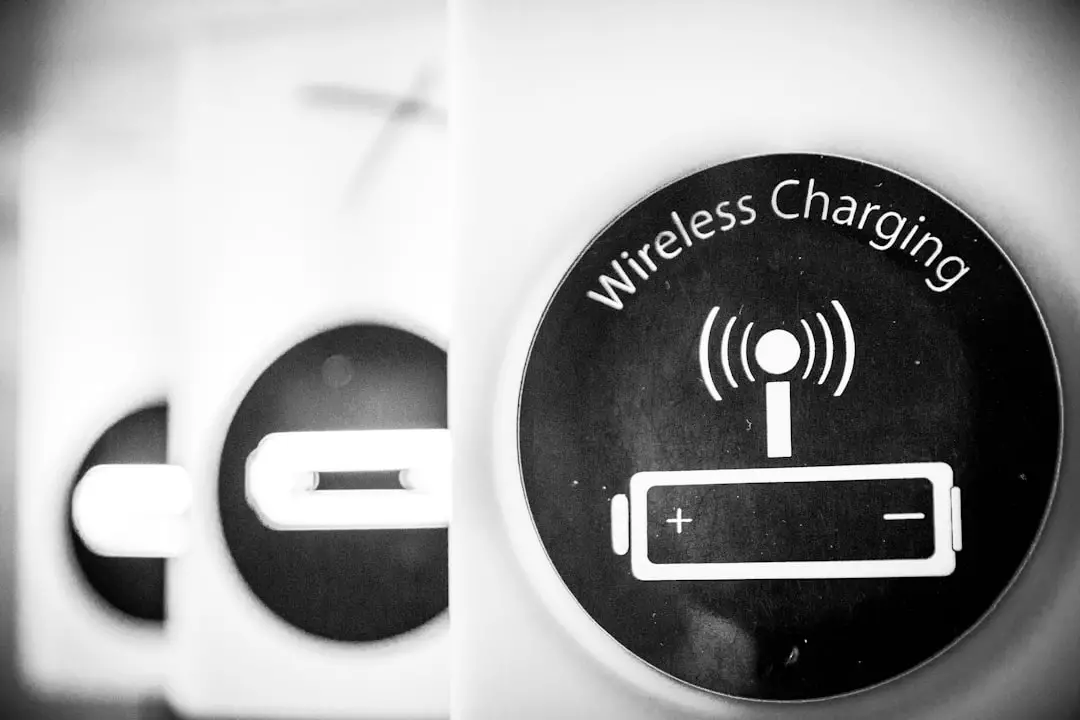The advent of wireless technology has revolutionized the way we interact with our devices, and Apple’s AirPods are a prime example of this transformation. Launched in 2016, AirPods have become synonymous with convenience and quality in the realm of wireless audio. Their seamless integration with the iPhone, along with other Apple devices, has made them a popular choice among consumers.
The compatibility between AirPods and iPhones is not merely a matter of connectivity; it encompasses a range of features that enhance user experience, such as automatic pairing, spatial audio, and the ability to switch between devices effortlessly. This compatibility is rooted in Apple’s ecosystem, which is designed to provide a cohesive experience across its products. As users increasingly rely on their AirPods for daily activities—be it listening to music, taking calls, or engaging in virtual meetings—the question of charging these devices becomes paramount.
While AirPods come with their own charging case, the idea of charging them using an iPhone has sparked curiosity among users. This article delves into the intricacies of AirPods and iPhone compatibility, particularly focusing on their charging capabilities, potential risks, and alternative charging methods.
Key Takeaways
- AirPods are compatible with iPhones and offer seamless connectivity and integration with Apple devices.
- AirPods and iPhones have different charging capabilities, with AirPods being able to be charged wirelessly or with a Lightning cable, and iPhones being charged with a Lightning cable or wirelessly with a Qi-compatible charger.
- It is not possible to directly charge AirPods with an iPhone, as the iPhone does not have the necessary hardware to support this function.
- AirPods and iPhones have different charging ports and connectors, with AirPods using a Lightning connector and iPhones using a Lightning connector or a wireless charging pad.
- Charging AirPods with an iPhone can potentially damage the battery and lead to overheating, reducing the lifespan of both devices.
Understanding the charging capabilities of AirPods and iPhone
Convenient Charging with AirPods
AirPods come equipped with a compact charging case that serves as both a protective enclosure and a power source. The case itself can be charged via a Lightning connector or wirelessly using Qi-compatible chargers, depending on the model. The first-generation AirPods come with a standard charging case, while the second generation introduced the option for a wireless charging case. This versatility enables users to recharge their AirPods conveniently, ensuring they remain powered throughout the day.
iPhone Charging Capabilities
Starting from the introduction of the Lightning port in 2012, Apple has consistently improved its charging capabilities. Recent models support fast charging and wireless charging through MagSafe technology, which enhances the user experience by allowing for effortless alignment and connection.
Optimizing Battery Life
The iPhone’s battery management system is designed to optimize charging efficiency, prolonging battery life while ensuring devices are charged quickly when needed. Understanding these capabilities is crucial for users who want to maximize their device’s performance and longevity.
Exploring the possibility of charging AirPods with an iPhone

The notion of charging AirPods directly from an iPhone is intriguing but fundamentally flawed due to the design and functionality of both devices. While both AirPods and iPhones utilize similar technologies for charging—primarily through Lightning connectors—their roles are distinct. The iPhone is designed to be a power source for other devices, but it does not have the capability to act as a charger for AirPods in a direct manner.
In practical terms, there is no built-in feature that allows an iPhone to charge AirPods wirelessly or through a physical connection. The AirPods require a specific voltage and current that the iPhone’s output does not provide when it comes to reverse charging. Users may find themselves wishing for such functionality, especially during travel or when away from traditional power sources, but as of now, Apple has not implemented this feature in its devices.
Comparing the charging ports and connectors of AirPods and iPhone
| Device | Charging Port | Connector |
|---|---|---|
| AirPods | Case with Lightning port | Lightning connector |
| iPhone | Lightning port | Lightning connector |
To understand why charging AirPods with an iPhone is not feasible, one must examine the charging ports and connectors used by both devices. AirPods utilize a Lightning connector for their charging case, which is consistent with many Apple products. This connector allows for efficient power transfer and is designed specifically for the compact nature of the AirPods’ case.
Conversely, iPhones also employ the Lightning connector but are equipped with more advanced power management systems that cater to larger batteries and more demanding applications. The iPhone’s Lightning port is primarily designed for data transfer and charging its own battery rather than serving as an output source for other devices. While both devices share a common connector type, their functionalities diverge significantly when it comes to power distribution.
Investigating the potential risks and limitations of charging AirPods with an iPhone
Attempting to charge AirPods using an iPhone could lead to several risks and limitations that users should be aware of. First and foremost, there is no official support or guidance from Apple regarding this practice, which raises concerns about safety and device integrity. Charging devices in ways that are not recommended by manufacturers can lead to overheating or damage to internal components.
Moreover, even if one were to find a workaround—such as using third-party accessories or adapters—there is no guarantee that these solutions would provide safe or effective charging. The potential for short-circuiting or damaging either device exists, which could result in costly repairs or replacements. Additionally, relying on unconventional methods for charging could lead to diminished battery performance over time, ultimately affecting the longevity of both the AirPods and the iPhone.
Discussing alternative methods for charging AirPods without an iPhone

For users seeking alternatives to charge their AirPods without relying on an iPhone, several options are available that ensure safe and efficient power replenishment. The most straightforward method is to use the provided charging case with a standard Lightning cable connected to a wall adapter or USB port. This method guarantees that the AirPods receive the appropriate voltage and current required for optimal charging.
Another viable option is utilizing wireless charging pads compatible with Qi technology if one possesses the wireless charging case for their AirPods. These pads offer convenience by allowing users to simply place their charging case on the pad without needing to connect any cables physically. Additionally, portable power banks equipped with USB ports can serve as excellent backup solutions for on-the-go charging needs.
These power banks can recharge the AirPods’ case multiple times before needing to be recharged themselves.
How to check the battery levels of AirPods and iPhone
Monitoring battery levels is essential for maintaining optimal performance in both AirPods and iPhones. For AirPods users, checking battery levels is straightforward. When connected to an iPhone or any compatible Apple device, users can simply open the charging case near their device, and a pop-up will display the current battery status of both the AirPods and their case.
This feature provides real-time information about how much charge remains, allowing users to plan accordingly. For those who prefer a more manual approach, battery levels can also be checked through the Bluetooth settings on an iPhone. By navigating to Settings > Bluetooth and locating the connected AirPods in the list, users can see their battery status displayed next to the device name.
On the iPhone side, battery levels can be monitored through the battery widget available on the home screen or by swiping down from the top right corner to access Control Center. This comprehensive approach ensures that users remain informed about their device’s power status at all times.
Exploring the potential benefits of charging AirPods with an iPhone
While direct charging of AirPods using an iPhone is not currently possible, exploring hypothetical benefits can provide insight into user desires for future technology advancements. If Apple were to introduce a feature allowing iPhones to charge AirPods wirelessly or through a direct connection, it could significantly enhance user convenience—especially for those who frequently find themselves on the move without access to traditional power sources. Such functionality could streamline daily routines by reducing the number of chargers users need to carry while traveling or commuting.
It would also align with Apple’s vision of creating an interconnected ecosystem where devices work harmoniously together. Furthermore, this capability could appeal to environmentally conscious consumers who seek ways to minimize electronic waste by maximizing existing device functionalities.
Addressing common misconceptions about charging AirPods with an iPhone
Several misconceptions surround the idea of charging AirPods with an iPhone that warrant clarification. One prevalent myth is that users can simply connect their AirPods’ case directly to an iPhone using a Lightning cable for charging purposes. This misunderstanding stems from the shared connector type but overlooks the fundamental differences in how each device manages power distribution.
Another common misconception is that third-party accessories might enable this functionality safely. While some products claim to offer reverse charging capabilities between devices, they often lack proper certification from Apple and may pose risks such as overheating or damaging internal components. Users should be cautious about relying on unverified solutions that could compromise their devices’ integrity.
Tips for maximizing the battery life of AirPods and iPhone
To ensure longevity and optimal performance from both AirPods and iPhones, users can adopt several best practices aimed at maximizing battery life. For AirPods, one effective strategy involves keeping them stored in their charging case when not in use. This practice not only protects them from physical damage but also ensures they remain charged when needed.
Additionally, users should be mindful of their listening habits; keeping volume levels moderate can help conserve battery life during extended use. Regularly updating firmware through connected devices can also enhance performance and efficiency by addressing any bugs or issues that may affect battery longevity. For iPhones, enabling Low Power Mode during critical times can extend battery life significantly by reducing background activity and visual effects.
Users should also consider disabling location services for apps that do not require constant tracking and managing notifications effectively to minimize unnecessary power consumption.
The future of charging technology for AirPods and iPhone
As technology continues to evolve at a rapid pace, it is likely that future iterations of both AirPods and iPhones will incorporate more advanced charging capabilities that enhance user convenience while maintaining safety standards. Innovations such as reverse wireless charging or improved energy management systems could pave the way for new possibilities within Apple’s ecosystem. The ongoing development in battery technology may also lead to longer-lasting batteries that require less frequent recharging, further simplifying user experiences across devices.
As consumers increasingly seek seamless integration between their gadgets, Apple’s commitment to innovation will undoubtedly shape how we think about device compatibility and power management in years to come.
If you are interested in learning more about how to charge your AirPods with your iPhone, you may also want to check out this article on Get iPhone Info. They provide helpful tips and tricks for getting the most out of your Apple devices. Additionally, you can visit their contact page if you have any specific questions or concerns. And don’t forget to review their privacy policy to ensure your information is protected while browsing their site.
FAQs
Can you charge AirPods with iPhone?
Yes, you can charge your AirPods with your iPhone using a Lightning cable. Simply connect the Lightning cable to your iPhone and then connect the other end to the charging case of your AirPods.
Can you charge AirPods wirelessly with iPhone?
If you have a compatible iPhone and AirPods with a wireless charging case, you can charge your AirPods wirelessly using your iPhone. Simply place the AirPods case on a Qi-compatible wireless charging pad and ensure that the iPhone is also compatible with wireless charging.
Can you charge AirPods Pro with iPhone?
Yes, you can charge your AirPods Pro with your iPhone using a Lightning cable. The process is the same as charging regular AirPods with an iPhone.
Can you charge AirPods Pro wirelessly with iPhone?
If you have a compatible iPhone and AirPods Pro with a wireless charging case, you can charge your AirPods Pro wirelessly using your iPhone. The process is the same as charging regular AirPods wirelessly with an iPhone.










